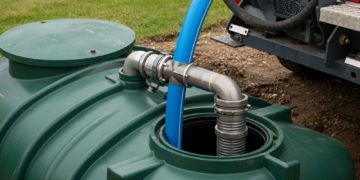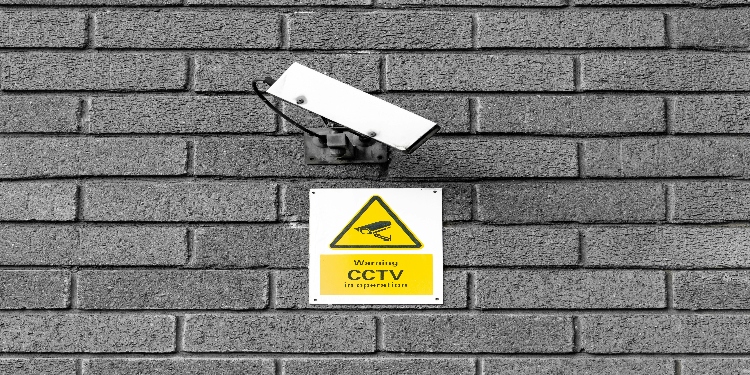Introduction to CCTV Systems
Closed-Circuit Television (CCTV) has become an essential component of modern security systems, offering a reliable means of surveillance for both residential and commercial properties. The primary function of a CCTV system is to provide real-time monitoring and recording capabilities, thereby enhancing security measures and deterring criminal activity.
The evolution of CCTV technology has led to significant advancements that not only improve the quality and reliability of surveillance but also make installation easier and more accessible for homeowners and businesses alike. Understanding the various aspects of CCTV systems is crucial for anyone considering installation.
Importance of CCTV in Security
The necessity for robust security solutions cannot be overstated. With crime rates fluctuating globally, the demand for effective surveillance systems continues to rise. Here are some compelling reasons why investing in a quality CCTV system is imperative:
– Deterrent Effect: The mere presence of cameras can deter potential intruders from targeting your property.
– Evidence Collection: In the unfortunate event of a crime, recorded footage can serve as invaluable evidence for law enforcement agencies.
– Remote Monitoring: Many modern CCTV systems allow users to monitor their property remotely via smartphones or computers.
– Insurance Benefits: Having a reliable security system can often lead to reduced insurance premiums, as it lowers the risk for insurers.
Statistics indicate that areas equipped with CCTV cameras experience a significant reduction in crime rates, reinforcing the argument for their effectiveness.
Types of CCTV Cameras
When considering a CCTV installation, it’s important to understand the different types of cameras available, as each serves unique purposes and conditions:
1. Dome Cameras
These are commonly used in indoor settings due to their discreet design and versatility. They can rotate 360 degrees, providing wide coverage.
2. Bullet Cameras
Characterized by their cylindrical shape, bullet cameras are ideal for outdoor use, particularly for monitoring entrances and perimeters.
3. PTZ Cameras (Pan-Tilt-Zoom)
These advanced cameras can be remotely controlled to pan, tilt, or zoom in on specific areas, making them suitable for large spaces requiring active surveillance.
4. IP Cameras
Internet Protocol (IP) cameras transmit data over the internet, allowing users to access live feeds from anywhere in the world.
5. Thermal Cameras
Utilizing heat detection technology, thermal cameras are beneficial in low-light conditions or complete darkness.
Choosing the right type depends on factors such as location, desired coverage area, and specific monitoring needs.
Key Features to Look For
Selecting a suitable CCTV system involves understanding key features that enhance functionality:
– Resolution: Higher resolution cameras provide clearer images, which is crucial for identifying individuals and details.
– Night Vision: Look for cameras that offer infrared capabilities to ensure clear imaging after dark.
– Storage Options: Decide between cloud storage or local storage solutions based on your preferences and budget.
– Motion Detection: This feature allows cameras to record only when movement is detected, saving storage space.
– Weather Resistance: For outdoor installations, ensure that the cameras are weatherproof and durable against environmental elements.
A well-rounded system should incorporate several or all these features depending on your specific requirements.
The CCTV Installation Process
Installing a CCTV system may seem daunting, but following a structured process can simplify it significantly:
1. Site Assessment
Conducting a thorough assessment helps identify vulnerable areas that require surveillance coverage.
2. Planning Camera Placement
Strategically placing cameras ensures maximum visibility while minimizing blind spots. Consider entry points, driveways, and high-value areas.
3. Wiring Setup
Depending on whether you choose wired or wireless systems, proper cabling is essential for reliable connectivity and power supply.
4. Camera Installation
Mounting the cameras securely at optimal angles will enhance their effectiveness in capturing footage.
5. System Configuration
Configuring settings such as motion detection zones and recording schedules ensures that the system operates according to your preferences.
6. Testing
Before finalizing installation, thoroughly test each camera’s functionality and adjust as necessary.
By adhering to this process, you can ensure a successful installation that meets your security needs effectively.
Choosing the Right Installer
Selecting an experienced professional is crucial for effective installation:
– Experience: Look for installers with proven experience in both residential and commercial projects.
– Credentials: Verify that they have appropriate licenses and certifications.
– Reviews: Check customer testimonials and case studies to gauge previous work quality.
– Support Services: Ensure they offer ongoing support or maintenance services post-installation.
A reputable installer not only guarantees proper setup but also provides insights on optimizing your system’s efficiency.
Maintenance and Upkeep
Regular maintenance is vital for ensuring your CCTV system operates optimally:
– Routine Checks: Schedule periodic inspections to clean lenses and check wiring connections.
– Software Updates: Keep firmware up-to-date to benefit from security enhancements.
– Storage Management: Regularly review recorded footage and manage storage capacity effectively.
Establishing a maintenance routine can prolong the lifespan of your equipment while ensuring consistent performance.
Legal Considerations in CCTV Use
Understanding legal implications surrounding CCTV use is essential:
– Privacy Laws: Familiarize yourself with local laws regarding video surveillance; these often dictate where you can install cameras.
– Signage Requirements: Some jurisdictions may require signage indicating surveillance in operation.
– Data Protection Regulations: Be aware of regulations concerning data collection and retention policies.
Failure to adhere to legal guidelines can lead to substantial penalties; hence it’s wise to consult legal experts if unsure about compliance issues.
Advanced Technologies in CCTV
The future of surveillance lies in advanced technologies that enhance operational capabilities:
Artificial Intelligence (AI)
AI-integrated systems can analyze footage in real-time, recognizing faces or unusual behaviors that warrant immediate action.
Cloud Computing
Cloud-based storage solutions provide scalability while allowing remote access without physical limitations.
Integration with Smart Home Systems
Modern CCTV systems can integrate seamlessly with smart home technologies like alarms and lighting systems for comprehensive security management.
Staying abreast of these technologies ensures that your security measures remain cutting-edge and effective against evolving threats.
Real-World Applications and Case Studies
CCTV systems are employed across various sectors due to their versatility:
Residential Use
Homeowners often utilize CCTV systems not only for crime deterrence but also as part of smart home integrations—allowing them remote monitoring via smartphones.
Commercial Use
Businesses implement these systems extensively—retailers use them for loss prevention while office buildings monitor employee safety and access control.
Case Study Example:
A retail store implemented an advanced IP camera system resulting in a 30% decrease in theft within six months due to improved monitoring capabilities combined with employee training based on insights drawn from footage analysis.
In summary, investing in expert CCTV installation offers peace of mind whether at home or work. By understanding the nuances—from selecting the right type of camera to adhering strictly to legal regulations—individuals can significantly enhance their security posture through well-planned surveillance strategies tailored specifically for their needs.











































































